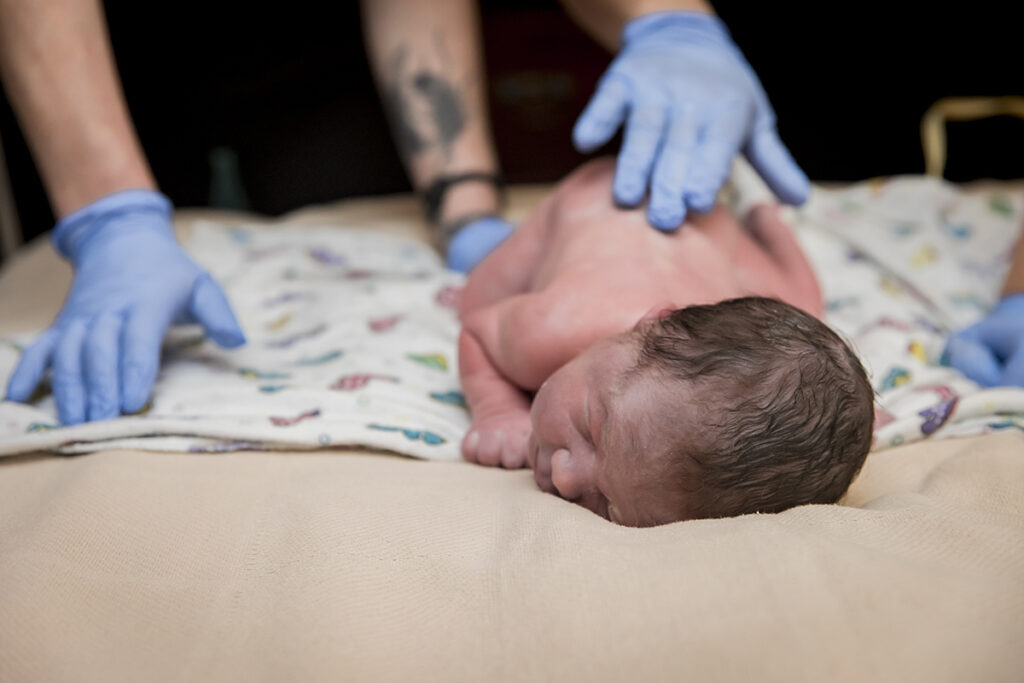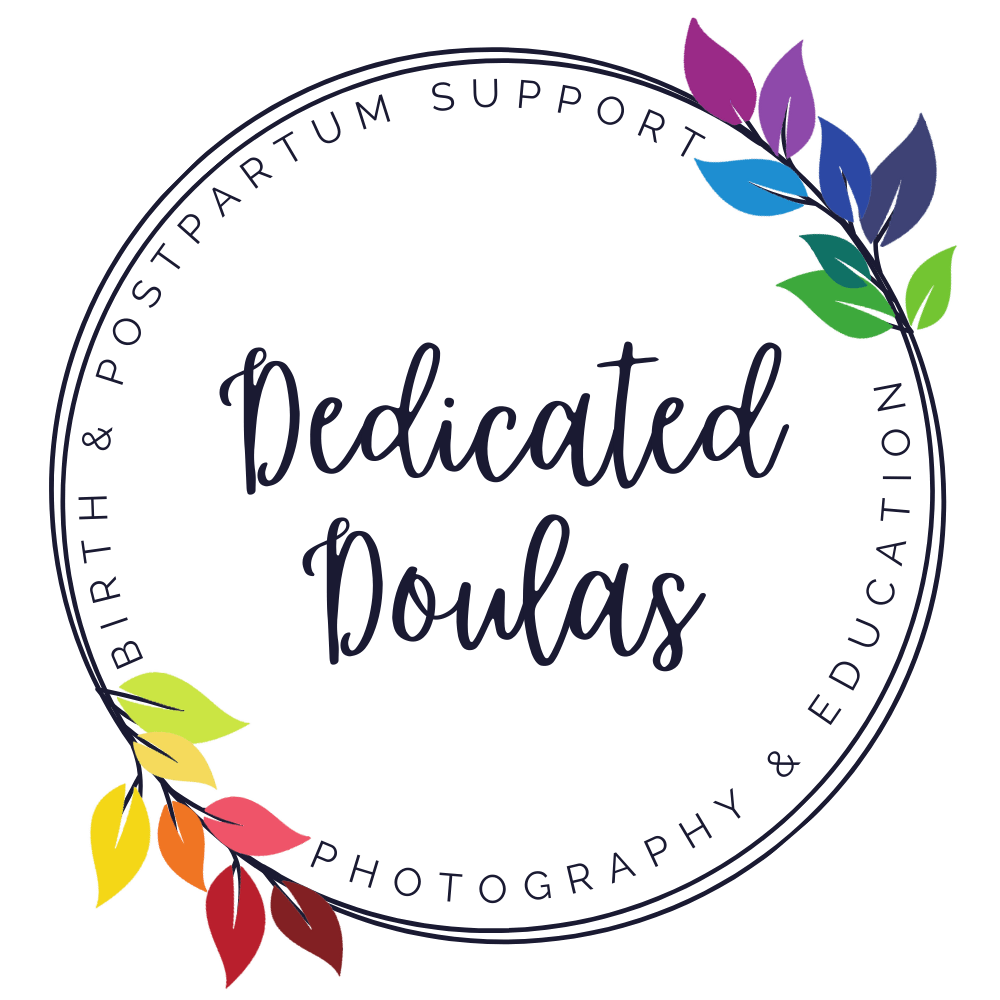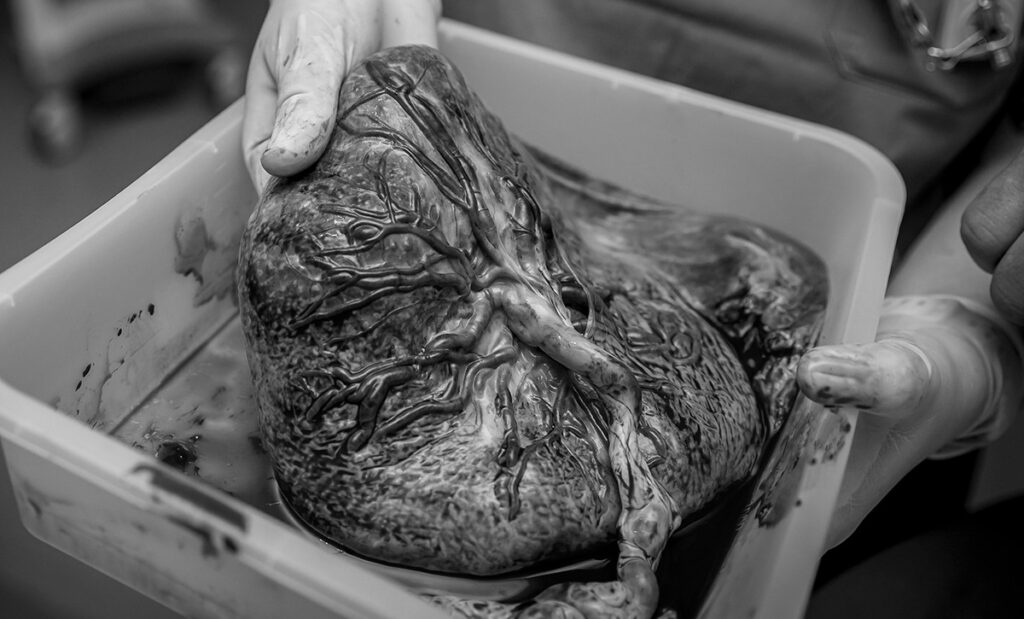Blog
Useful information for your pregnancy, birth and motherhood.

Childbirth Education Class
Price: $325
Small Group
Includes:
- Mentorship from an experienced Evidence Based Birth® Instructor
- Six weekly, live (virtual or in-person) classes, including an Orientation and a Comfort Measures Rehearsal, plus an optional “reunion” after all the babies have arrived
- Weeknight and Weekend options are available
- Small class sizes and “flipped classroom” instruction style
- Online videos for you and your partner(s) to watch together between classes
- In-depth workbook in physical or digital format
- Access to the extensive EBB® virtual library
- BONUS: Breastfeeding/chestfeeding videos
- BONUS: Newborn care videos
- BONUS: Earn points throughout to get prizes at the end!

Do I even need to take a childbirth class?
Can’t I learn this stuff online?
I know birth is unpredictable, isn’t it better to just do what the hospital tells me?
Hi, I’m Cari, your Evidence Based Birth Instructor. Almost every family I work with has these questions. It’s unfortunate, but a lot of the information you can find online is outdated or inaccurate. The founder of Evidence Based Birth®, Rebecca Dekker, PhD, RN, is a former college prof who knows how to make classes exciting. The end result is a class that is motivating and SO much fun to participate in. You will learn more than you could ever imagine!
One thing that makes us different is that we talk about the real issues affecting childbirth today. We don’t shy away from addressing the issues caused by patriarchy, institutional racism, or lack of inclusivity in our systems.
We attempt to uncover the issues in a relaxing way and, when approached with an open mind, we find and discuss real life solutions to affect change for your birth.
Take the Evidence Based Birth® Childbirth Class:
- Get mentorship, community, and guidance!
- Reduce anxiety & fear
- Explore options for evidence-based care, comfort measures, and advocacy in your birth space
- Get prepared, get answers, get empowered!
Childbirth Education Class


Photography
Placenta encapsulation is a practice that involves processing and encapsulating the placenta after childbirth, creating easy-to-consume capsules. This ancient tradition, rooted in various cultures, has gained popularity in recent years for its potential postpartum benefits. Advocates suggest that consuming placenta capsules may help replenish essential nutrients, regulate hormones, and boost energy levels for new mothers. While research on these claimed benefits is ongoing, placenta encapsulation continues to be a topic of interest and discussion in the realm of postpartum wellness.

Benefits Include:
- Nutrient Replenishment: The placenta is rich in essential nutrients like iron, vitamin B6, and protein, which may help replenish a new mother’s nutrient stores after childbirth.
- Hormone Regulation: Supporters of placenta encapsulation claim that it can help balance postpartum hormones, potentially alleviating symptoms of postpartum depression and anxiety.
- Increased Energy Levels: Some believe that consuming placenta capsules can provide an energy boost during the demanding early days of motherhood.
- Improved Milk Supply: There are anecdotal reports that placenta encapsulation may contribute to increased milk production in breastfeeding mothers.
- Faster Postpartum Recovery: Advocates suggest that the nutrients in encapsulated placenta may aid in faster healing, reduced postpartum bleeding, and a quicker return to pre-pregnancy weight.
- Enhanced Mood and Well-Being: Supporters claim that placenta encapsulation can help stabilize mood and promote a sense of well-being, potentially reducing the risk of postpartum mood disorders.
Placenta encapsulation involves the transformation of the placenta into ingestible pills. At Hearth and Home Midwifery, this process begins with steaming the placenta along with ginger and myrrh, followed by dehydration in a food-grade dehydrator. The resulting placenta powder is then encapsulated for consumption. This encapsulation procedure is typically initiated promptly after birth, allowing the postpartum parent to start ingesting the placenta within a few days.
Within the first 24 hours following birth, the placenta is carefully prepared. It is laid out on a protective surface, and if desired, a print of the placenta can be made. The umbilical cord and amniotic sac are then removed. The placenta undergoes a gentle water rinse and massage. It is then steamed over a stovetop, combining ginger for its warming properties and myrrh for its microbial benefits. After approximately 20 minutes of steaming, the placenta is sliced and placed in a food-grade dehydrator. Optionally, the umbilical cord can also be included to create a keepsake. Once fully dehydrated, the placenta is ground into a fine powder using a food processor. This powder is then carefully encapsulated into size 00 capsules, which are stored in a glass bottle and meant to be kept refrigerated until consumption.
Things to Consider
- Lack of Scientific Evidence: The purported benefits of placenta encapsulation are largely anecdotal, and there is limited scientific research to support these claims. As a result, the effectiveness of this practice remains uncertain.
- Potential Health Risks: If not handled, prepared, or stored properly, there is a risk of bacterial contamination, which could lead to infection or illness. It’s crucial to work with a trained and reputable professional to ensure proper sanitation and preparation.
- Unregulated Industry: The practice of placenta encapsulation is not standardized or regulated, meaning there may be variability in preparation methods, dosages, and safety measures among providers.
- Allergic Reactions or Adverse Effects: Some individuals may have allergies or sensitivities to certain components of the placenta, which could result in adverse reactions.
- Psychological Discomfort: For some individuals, the idea of consuming their own placenta may be emotionally or psychologically uncomfortable, and they may find it difficult to overcome the perceived “ick” factor.
- Cost: Placenta encapsulation services can be relatively expensive, and it may not be covered by insurance. This cost consideration is an important factor for many families.
- Legal Restrictions: In some regions, there may be legal restrictions or requirements regarding the handling and disposal of placentas, which can impact one’s ability to pursue encapsulation.
- Limited Shelf Life: Placenta capsules have a finite shelf life, and improper storage can lead to spoilage or reduced potency of the capsules.

Price: $250
Includes:
- We will pick up your placenta from your birth location or home, generally within 24 hours after birth
- The placenta will be prepared based on the Traditional Chinese Medicine technique which includes steaming with lemon, ginger, and jalapeno then dehydrated and encapsulated in size 0 vegetarian capsules
- You will receive approximately 100 – 125 capsules (depending on the size of your placenta) packaged in a glass jar
- One “Tree of Life” blood print on artist’s quality paper (additional prints available)
- When possible, we will prepare an umbilical cord keepsake (heart/spiral/etc.) in an organza bag.
- Recommended storage and usage instruction pamphlet
- Delivery of the completed package to your home, generally within 72 hours of pick-up. Add-on Services:
Add On: Full-Color Tree of Life prints created with food-safe ink $25ea
Photography


Feeding Support
Placenta encapsulation is a practice that involves processing and encapsulating the placenta after childbirth, creating easy-to-consume capsules. This ancient tradition, rooted in various cultures, has gained popularity in recent years for its potential postpartum benefits. Advocates suggest that consuming placenta capsules may help replenish essential nutrients, regulate hormones, and boost energy levels for new mothers. While research on these claimed benefits is ongoing, placenta encapsulation continues to be a topic of interest and discussion in the realm of postpartum wellness.

Benefits Include:
- Nutrient Replenishment: The placenta is rich in essential nutrients like iron, vitamin B6, and protein, which may help replenish a new mother’s nutrient stores after childbirth.
- Hormone Regulation: Supporters of placenta encapsulation claim that it can help balance postpartum hormones, potentially alleviating symptoms of postpartum depression and anxiety.
- Increased Energy Levels: Some believe that consuming placenta capsules can provide an energy boost during the demanding early days of motherhood.
- Improved Milk Supply: There are anecdotal reports that placenta encapsulation may contribute to increased milk production in breastfeeding mothers.
- Faster Postpartum Recovery: Advocates suggest that the nutrients in encapsulated placenta may aid in faster healing, reduced postpartum bleeding, and a quicker return to pre-pregnancy weight.
- Enhanced Mood and Well-Being: Supporters claim that placenta encapsulation can help stabilize mood and promote a sense of well-being, potentially reducing the risk of postpartum mood disorders.
Placenta encapsulation involves the transformation of the placenta into ingestible pills. At Hearth and Home Midwifery, this process begins with steaming the placenta along with ginger and myrrh, followed by dehydration in a food-grade dehydrator. The resulting placenta powder is then encapsulated for consumption. This encapsulation procedure is typically initiated promptly after birth, allowing the postpartum parent to start ingesting the placenta within a few days.
Within the first 24 hours following birth, the placenta is carefully prepared. It is laid out on a protective surface, and if desired, a print of the placenta can be made. The umbilical cord and amniotic sac are then removed. The placenta undergoes a gentle water rinse and massage. It is then steamed over a stovetop, combining ginger for its warming properties and myrrh for its microbial benefits. After approximately 20 minutes of steaming, the placenta is sliced and placed in a food-grade dehydrator. Optionally, the umbilical cord can also be included to create a keepsake. Once fully dehydrated, the placenta is ground into a fine powder using a food processor. This powder is then carefully encapsulated into size 00 capsules, which are stored in a glass bottle and meant to be kept refrigerated until consumption.
Things to Consider
- Lack of Scientific Evidence: The purported benefits of placenta encapsulation are largely anecdotal, and there is limited scientific research to support these claims. As a result, the effectiveness of this practice remains uncertain.
- Potential Health Risks: If not handled, prepared, or stored properly, there is a risk of bacterial contamination, which could lead to infection or illness. It’s crucial to work with a trained and reputable professional to ensure proper sanitation and preparation.
- Unregulated Industry: The practice of placenta encapsulation is not standardized or regulated, meaning there may be variability in preparation methods, dosages, and safety measures among providers.
- Allergic Reactions or Adverse Effects: Some individuals may have allergies or sensitivities to certain components of the placenta, which could result in adverse reactions.
- Psychological Discomfort: For some individuals, the idea of consuming their own placenta may be emotionally or psychologically uncomfortable, and they may find it difficult to overcome the perceived “ick” factor.
- Cost: Placenta encapsulation services can be relatively expensive, and it may not be covered by insurance. This cost consideration is an important factor for many families.
- Legal Restrictions: In some regions, there may be legal restrictions or requirements regarding the handling and disposal of placentas, which can impact one’s ability to pursue encapsulation.
- Limited Shelf Life: Placenta capsules have a finite shelf life, and improper storage can lead to spoilage or reduced potency of the capsules.

Price: $250
Includes:
- We will pick up your placenta from your birth location or home, generally within 24 hours after birth
- The placenta will be prepared based on the Traditional Chinese Medicine technique which includes steaming with lemon, ginger, and jalapeno then dehydrated and encapsulated in size 0 vegetarian capsules
- You will receive approximately 100 – 125 capsules (depending on the size of your placenta) packaged in a glass jar
- One “Tree of Life” blood print on artist’s quality paper (additional prints available)
- When possible, we will prepare an umbilical cord keepsake (heart/spiral/etc.) in an organza bag.
- Recommended storage and usage instruction pamphlet
- Delivery of the completed package to your home, generally within 72 hours of pick-up. Add-on Services:
Add On: Full-Color Tree of Life prints created with food-safe ink $25ea
Feeding Support


Placenta Encapsulation
Price: $250
Includes:
- We will pick up your placenta from your birth location or home, generally within 24 hours after birth
- The placenta will be prepared based on the Traditional Chinese Medicine technique which includes steaming with lemon, ginger, and jalapeno then dehydrated and encapsulated in size 0 vegetarian capsules
- You will receive approximately 100 – 140 capsules (depending on the size of your placenta) packaged in a glass jar
- One “Tree of Life” blood print on artist’s quality paper (additional prints available)
- When possible, we will prepare an umbilical cord keepsake (heart/spiral/etc.) in an organza bag
- Recommended storage and usage instruction pamphlet
- Delivery of the completed package to your home, generally within 3-5 days of pick-up
Add On: Full-Color Tree of Life prints created with food-safe ink $25ea

Why should I encapsulate & consume my placenta?
Nearly every mammal on earth consumes their placenta after giving birth and many human cultures around the world routinely do too! There are many reasons why – here are some of the most commonly reported benefits in humans:
- Increased energy and alertness
- Better overall mood
- Fewer instances of “baby blues”
- Feeling more balanced or centered
- Increased milk supply
The Encapsulation Process
We process placentas for encapsulation using a technique based on the Traditional Chinese Medicinal Method
- We start by gently prepping and steaming the placenta over a pot filled with lemon, jalapeno, and ginger
- The placenta is then sliced thinly and set to dehydrate for up to 24 hours
- Once it is fully dry, it is ground into a fine powder and filled into vegetarian capsules which are then stored in a glass jar
- The capsules are then taken by the birthing parent as needed
Placenta Encapsulation

